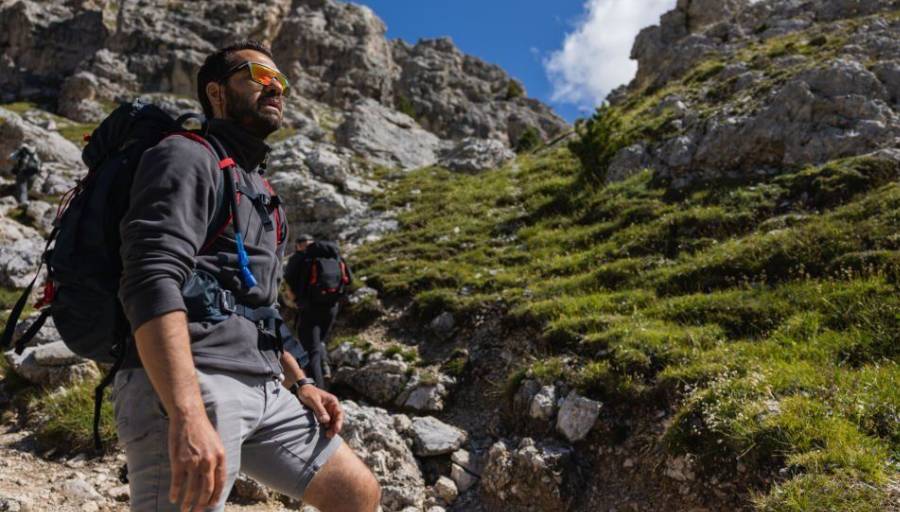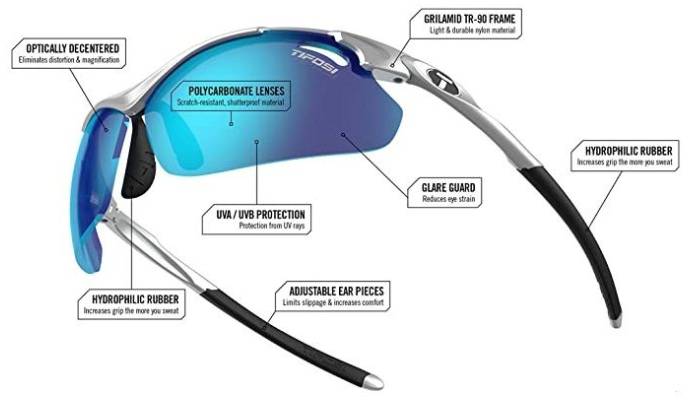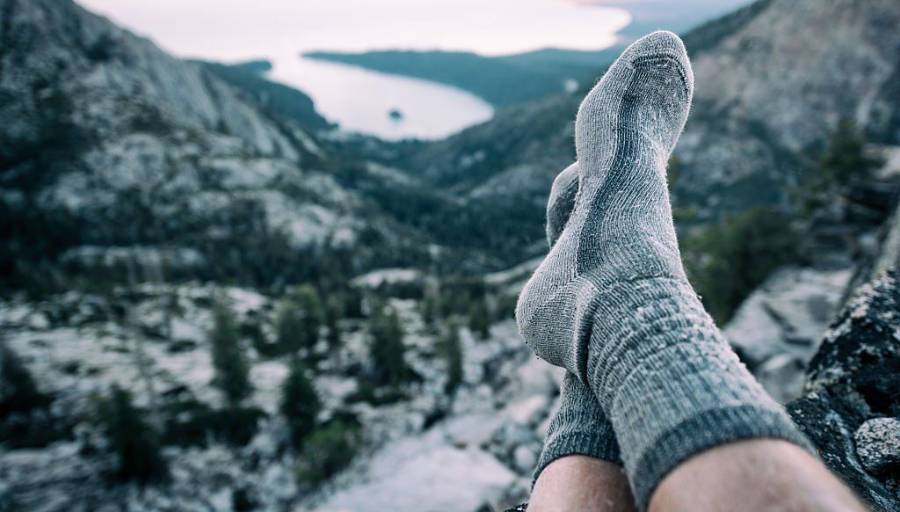How to Choose Sunglasses for Hiking

Choosing the right sunglasses for hiking is essential to protect your eyes from harmful UV rays, reduce glare, and enhance your overall visual experience while enjoying the great outdoors. Whether you’re trekking through mountain trails, exploring forests, or crossing sunlit meadows, having the right pair of sunglasses can significantly improve your hiking adventure.
In this guide, we will explore important factors to consider when selecting sunglasses for hiking. We’ll discuss the importance of UV protection, lens types, frame styles, and other key features that can enhance your comfort and performance on the trails.
How to Choose Sunglasses for Hiking

Let’s dive into the essential factors you should consider when selecting sunglasses for your hiking adventures.
UV Protection
One of the most important factors when choosing sunglasses for hiking is their ability to block harmful ultraviolet (UV) rays. Look for sunglasses that offer 100% UV protection, as this will shield your eyes from both UVA and UVB rays, which can cause long-term damage to your eyes and increase the risk of cataracts and macular degeneration.
Lens Types
Different lens types offer varying benefits for hiking. Consider the following options:
- Polarized Lenses: Polarized lenses are designed to reduce glare, particularly from reflective surfaces like water, snow, or rocks. They enhance visual clarity and minimize eye strain, making them a great choice for hiking in bright environments.
- Photochromic Lenses: Photochromic lenses automatically adjust their tint level based on the amount of sunlight they are exposed to. They darken in bright conditions and lighten in low light. These lenses are convenient for hiking in changing light conditions, as they adapt to different environments.
- Mirrored Lenses: Mirrored lenses have a reflective coating that reduces glare by reflecting light away from the eyes. They are ideal for hiking in extremely bright conditions, such as high altitudes or snowy landscapes.
- Gradient Lenses: Gradient lenses are darker at the top and gradually become lighter towards the bottom. They are useful for activities where you need protection from overhead sunlight while maintaining a clear view of the ground, making them suitable for hiking.
Lens Color
The lens color can affect your perception of colors and contrast. Consider the following lens colors and their benefits:
- Gray: Gray lenses provide a neutral color perception and are suitable for general outdoor activities. They reduce brightness without distorting colors.
- Brown/Amber: Brown or amber lenses enhance contrast and depth perception, making them ideal for hiking in variable light conditions. They are particularly useful in partly cloudy or overcast environments.
- Green: Green lenses provide good color balance and enhance contrast in low-light conditions. They can be versatile options for hiking in different environments.
Fit and Coverage
When selecting sunglasses for hiking, choose a pair that offers a comfortable fit and provides adequate coverage for your eyes. Look for sunglasses with wrap-around or larger frames to minimize peripheral light and protect your eyes from dust, wind, and debris. Additionally, adjustable nose pads and temple arms can ensure a secure and customized fit.
Durability and Lens Material
Opt for sunglasses that are made from durable materials, such as polycarbonate or Trivex, which are impact-resistant and can withstand rough outdoor conditions. These materials are also lightweight, which helps to reduce the strain on your face during long hikes.
Ventilation
Hiking often involves physical activity, which can lead to increased perspiration. Look for sunglasses with proper ventilation, such as vents or cutouts in the frame, to prevent fogging and maintain clear vision.
Prescription Compatibility
If you wear prescription glasses, consider sunglasses that are compatible with prescription lenses. Some sunglasses allow for the insertion of prescription inserts, while others offer direct prescription lens options.
Additional Features
Depending on your preferences and specific hiking needs, you may find the following features beneficial:
- Anti-Scratch Coating: Sunglasses with an anti-scratch coating can help protect the lenses from minor abrasions during outdoor activities.
- Water and Oil Resistance: Some sunglasses have a hydrophobic or oleophobic coating that repels water and oil, making them easier to clean and maintain.
- Interchangeable Lenses: Certain sunglasses come with interchangeable lenses, which allow you to swap lenses based on the lighting conditions or your preferences.
- Strap or Retention System: You can use this strap or retention system to hang your sunglasses around your neck when you don’t want to wear them but wish to keep them handy.
FAQs
Are expensive sunglasses better for hiking?
The price of sunglasses does not necessarily determine their quality or suitability for hiking. While some higher-end sunglasses offer advanced features and materials, there are affordable options that provide excellent UV protection and durability. Focus on the specific features that meet your hiking needs rather than solely considering the price.
Can I use fashion sunglasses for hiking?
Fashion sunglasses do not provide the necessary protection and functionality required for hiking. It’s important to choose sunglasses specifically designed for outdoor activities, as they offer features like UV protection, impact resistance, and glare reduction. Fashion sunglasses lack these important attributes and do not withstand the demands of hiking.
What is the ideal lens darkness for hiking?
The ideal lens darkness depends on the lighting conditions you expect to encounter during your hikes. If you hike in bright, sunny environments, darker lenses like gray or mirrored lenses can provide adequate protection. However, for variable lighting or overcast conditions, lighter lens colors like brown or amber can enhance contrast and improve visibility.
Should I choose sunglasses with a higher or lower VLT (Visible Light Transmission) for hiking?
Visible Light Transmission (VLT) refers to the amount of light that can pass through the lenses. For hiking in bright conditions, sunglasses with lower VLT (10-20%) can provide better glare reduction and sun protection. However, for low-light or cloudy conditions, sunglasses with higher VLT (20-40%) allow more light transmission and can enhance visibility.
Can I wear contact lenses with sunglasses for hiking?
Yes, you can wear contact lenses with sunglasses for hiking. In fact, many sunglasses are designed to accommodate prescription lenses, including contact lenses. Ensure that the sunglasses you choose have enough space and a comfortable fit for your contact lenses.
Can I wear polarized lenses for hiking in all situations?
While polarized lenses are excellent for reducing glare, they aren’t suitable for all hiking situations. Polarized lenses can sometimes reduce the visibility of certain LCD screens, such as those found on some GPS devices or smartphones. Additionally, in certain situations where you need to see glare on the surface (e.g., spotting reflective trail markers), polarized lenses may hinder your ability to detect those reflections.
How do I clean and maintain my hiking sunglasses?
To clean your hiking sunglasses, use a microfiber cloth or lens cleaning solution specifically designed for eyewear. Avoid using abrasive materials or paper towels, as they can scratch the lenses. Additionally, store your sunglasses in a protective case when not in use to prevent damage.
Can I wear sunglasses with a hat or helmet for hiking?
Yes, you can wear sunglasses with a hat or helmet while hiking. Look for sunglasses with a frame design that allows for compatibility with headwear. Some sunglasses have features like rubberized temples or adjustable nose pads that can help maintain a secure fit when worn with a hat or helmet.
Conclusion
When selecting sunglasses, prioritize features like UV protection, lens types, fit and coverage, durability, and additional features that cater to your hiking needs. Focus on finding sunglasses with a comfortable fit and sufficient coverage to protect your eyes from dust, wind, and debris. Look for durable materials like polycarbonate or Trivex for longevity and impact resistance.
Remember that price doesn’t always determine the quality of sunglasses. Look for sunglasses designed specifically for outdoor activities rather than relying solely on fashion sunglasses.
Enjoy the trails with confidence and protect your eyes for years of hiking enjoyment.
See Also…





